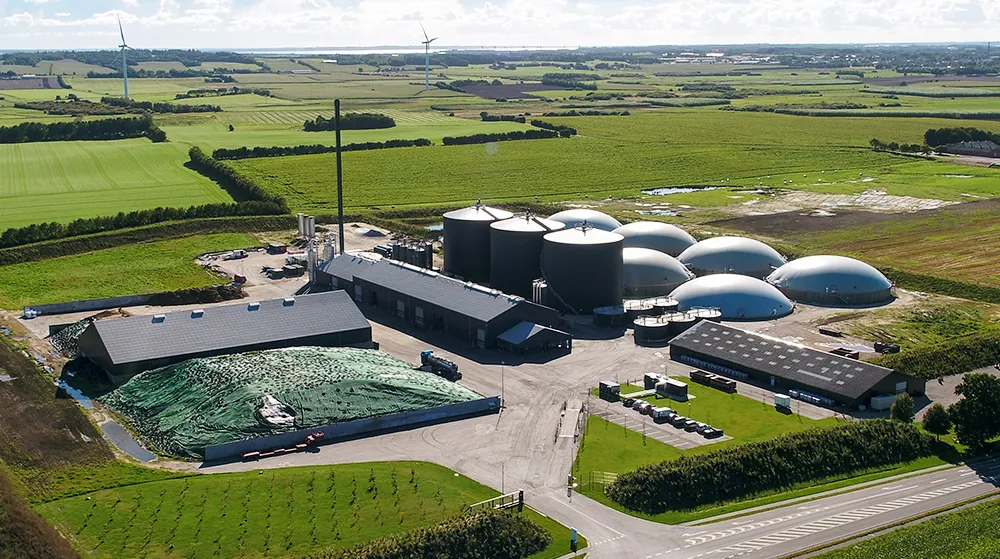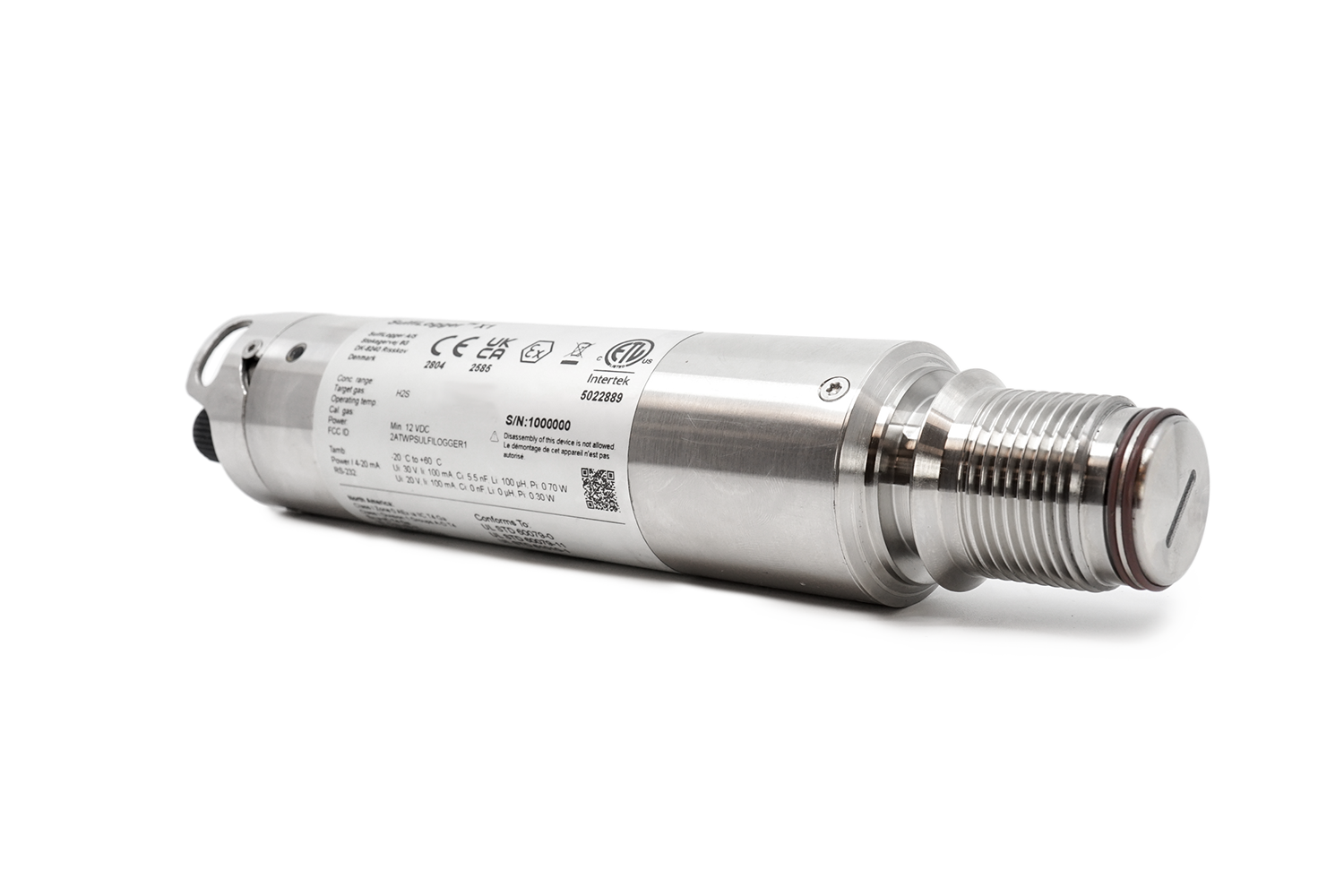Case study
H2S sensor optimizes odor emissions control at Vesthimmerland Biogas
Vesthimmerland Biogas wanted an alternative to grab sampling for measuring the plant’s odor emissions. To achieve this, two SulfiLoggerTM H2S sensors were installed in the CO2 discharge stream. This eliminated the plant’s need for manual grab samples and costly tests by external bodies, and the sensors’ real-time data furthermore provided valuable insights into biofilter and scrubber performance.
Background
Hydrogen sulfide (H2S) odors pose a significant challenge in biogas operations as they may cause complaints from nearby communities surrounding a biogas plant. If this challenge isn’t addressed, it may trigger municipality-initiated control measures by certified third bodies, burdening the biogas plant and potentially resulting in a shutdown. Hence, accurate measurements of H2S emissions are essential for efficient management and regulatory compliance in biogas operations.
Challenge
Vesthimmerland Biogas, an upgrading biogas plant supplying renewable natural gas to the Danish natural gas network, faced a challenge stemming from inefficient monitoring of H2S emissions. The inefficiency arose from the plant’s reliance on time-consuming grab sampling techniques, which failed to provide real-time insights into emission trends. Consequently, the plant lacked a clear picture of the trend in H2S emissions.
Flemming Nielsen, Operations Manager at Vesthimmerland Biogas, explained:
“Avoiding odor issues for the neighborhood and continuously emitting desulfurized gas was critical for the plant. However, relying solely on grab sampling posed difficulties. For instance, conducting measurements on Monday and then again on Thursday meant we lacked crucial data in between that helped reveal the trend.”
This challenge underscored the importance of implementing a simple, robust, and precise H2S monitoring solution capable of providing real-time data throughout the biogas process.
Sensor setup at Vesthimmerland Biogas
The two SulfiLogger™ sensors are installed directly in-pipe in the wet gas i the CO2 discharge stream after the scrubber and after the biofilter.
Vesthimmerland Biogas has a total of 4 SulfiLogger™ sensors installed. The two other sensors – indicated by the red dots in the illustration – are used for optimizing the performance of the plant’s activated carbon filters in the upgraded biomethane stream. This application is explained in a separate case story by SulfiLogger.
Solution
To avoid being dependent on grab sampling and to get a more thorough understanding of the issue, Vesthimmerland Biogas installed two SulfiLoggerTM H2S sensors in the CO2 discharge stream. One sensor was placed after an H2S scrubber, while another sensor was placed in the exhaust following a biofilter. Both sensors were installed inline, continuously monitoring directly in the pipe in wet and anoxic conditions with no sample conditioning required. The sensors were connected to the existing SCADA system via a 4-20 mA loop power connection. The sensors were calibrated by the local operators at three-month intervals in accordance with the manufacturer’s specifications. Before calibration, the sensors were cleaned with water.
Results
After implementing the two SulfiLoggerTM H2S sensors, Vesthimmerland Biogas experienced significant benefits in odor control and operational efficiency. Real-time data provided by the sensors enabled the plant to demonstrate its adherence to emissions standards, thereby eliminating the need for costly sample controls imposed by external regulatory bodies.
Flemming Nielsen, also emphasized the importance of the sensors’ ease of use and versatility:
“The ability to service the sensors ourselves is crucial for ensuring smooth operations.”
Additionally, the real-time data from the sensors benefited by providing insights into the performance of the scrubber and the biofilter. This capability allowed Vesthimmerland Biogas to make timely adjustments, ensuring optimal performance and minimizing the risk of equipment damage.
The plant thus achieved not only improved regulatory compliance of odor emissions, but also enhanced operational efficiency and equipment longevity.

Vesthimmerland Biogas
Vesthimmerland Biogas supplies renewable natural gas to 18,000 households, handling 275,000 tons of biomass annually.
The plant is a biogas upgrading plant, where CO2 is removed from the biogas and the upgraded biomethane is supplied to the nationwide Danish natural gas grid.
The plant uses a thermophilic process and uses various feedstock including manure, energy crops, and residual industrial products.
Further readings
Vesthimmerland Biogas has 2 additional SulfiLoggerTM H2S sensors installed for optimizing the performance of the plant’s activated carbon filter setup.
Want to know more?
Do you want to hear more about the benefits of monitoring H2S at the biogas plant?


